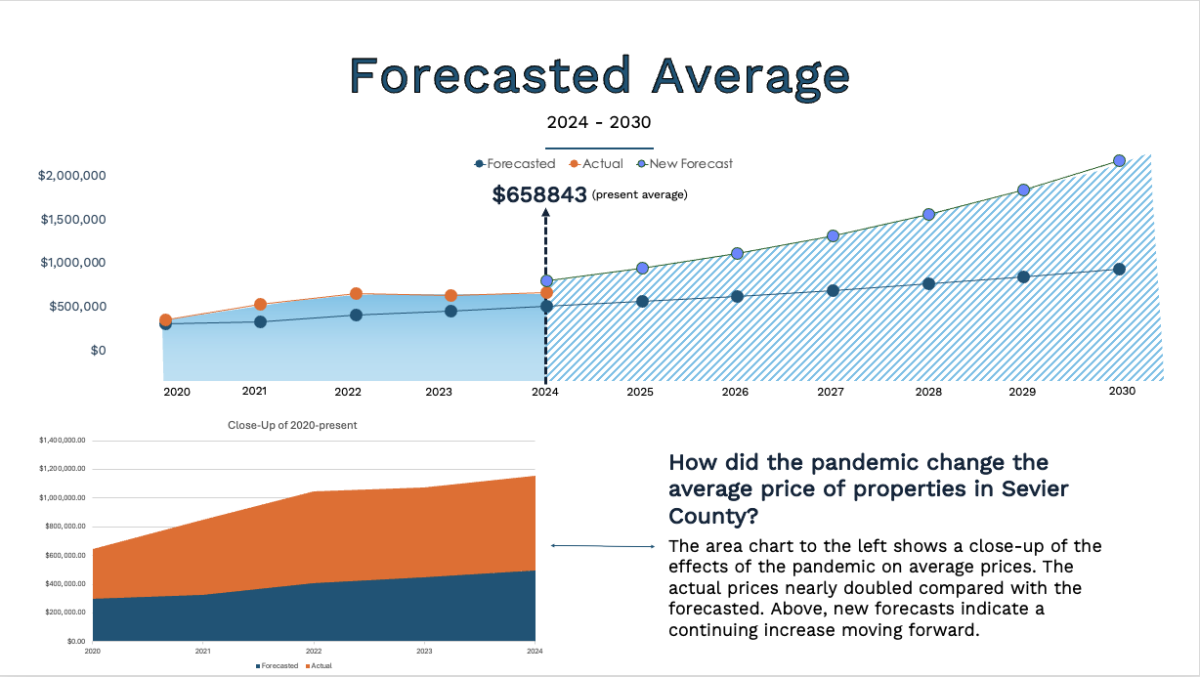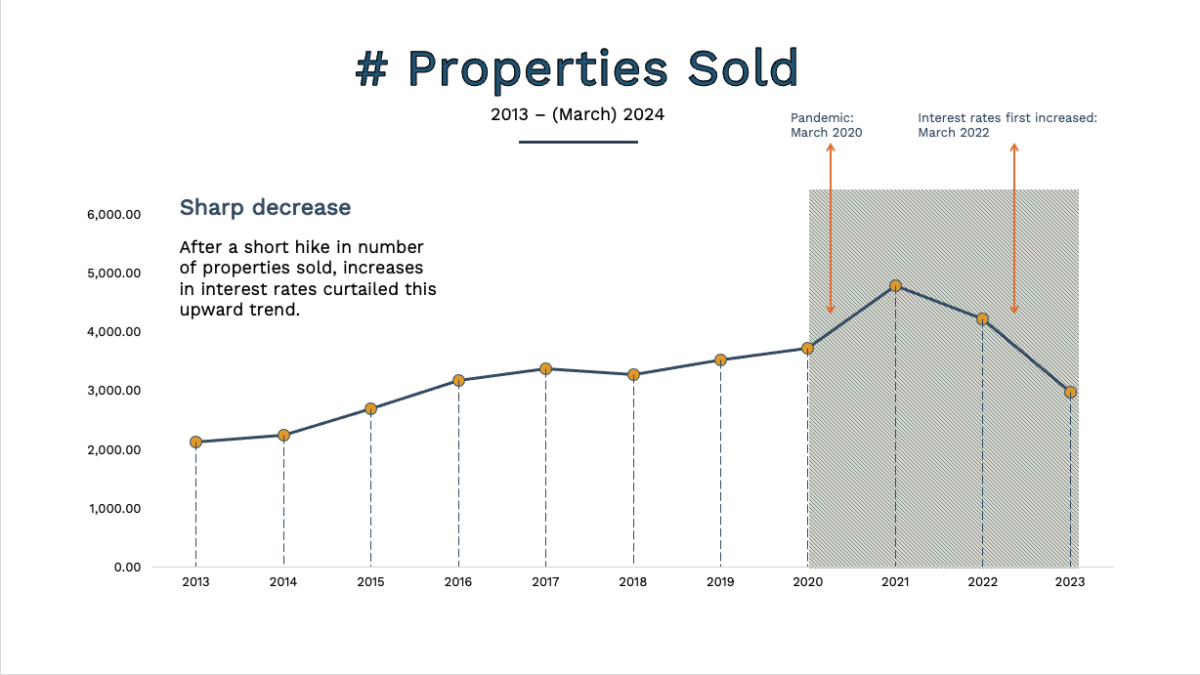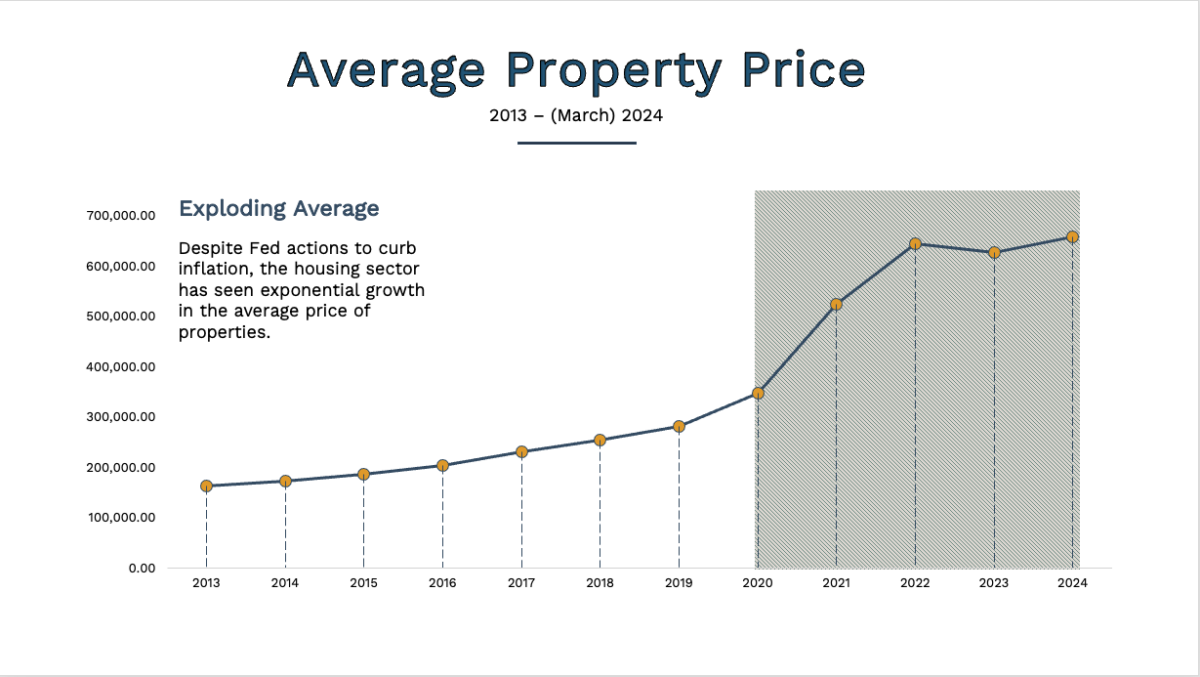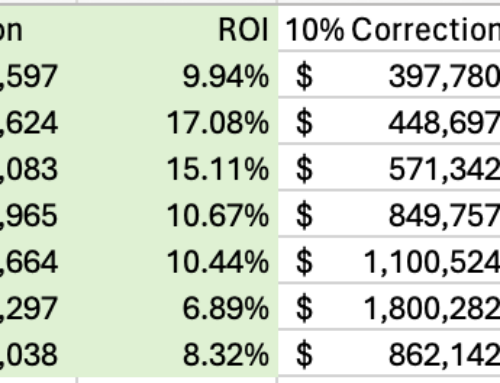Understanding the Graphs: A Window into the Market
- Graph 1
- Graph 2
- Graph 3
Understanding the flux of the real estate market requires more than a glance at the current trends; it demands a comprehensive analysis of various contributing factors. For the Smoky Mountains, particularly known for their vibrant Short Term Rental (STR) market, these factors gain an additional layer of complexity. Here’s an insight into how agent commission reform, industry regulations, interest rates, and the broader economy interact to influence the STR scene.
Forecasted Average Prices: A Steady Ascent
The first chart reveals a significant trend: the steady increase in forecasted average property prices from 2024 to 2030. This upward trajectory, punctuated by actual price points that exceed initial forecasts, illustrates a robust market. The ‘new forecast’ line, staying above the ‘actual’ prices, suggests an optimistic outlook for STR investors in the region. However, this optimism is cautiously tempered by the ‘present average’ price of $658,843, indicating a competitive and potentially costly market for newcomers.
The Pandemic’s Silver Lining
The pandemic’s impact, contrary to the downturn seen in many industries, has been paradoxically beneficial for property prices in Sevier County. The average price of properties has not just recovered but soared, nearly doubling the forecasted figures. This explosive growth, depicted in the close-up area chart, reflects a pandemic-driven demand for personal and rental spaces that the Smoky Mountains uniquely satisfy.
Sales Volume: The Interest Rate Effect
Our second graphic pinpoints a sharp decline in the number of properties sold, corresponding with the rise in interest rates in March 2022. This correlation signals that despite the price increases, higher borrowing costs have begun to weigh down the market’s momentum. This insight is crucial for STR operators, who must now factor in the cost of capital when calculating their potential returns.
Average Property Prices: Surging Against the Tide
The final graph underscores an ‘exploding average’ property price against the backdrop of Federal actions to curb inflation. This exponential growth in prices demonstrates a resilient housing sector that has, thus far, shrugged off the Fed’s cooling measures. It’s a clear indication that the Smoky Mountains remain an attractive location for real estate investors.
The Narrative Behind the Numbers
The interplay of the factors outlined in the graphs paints a picture of a dynamic STR market. Let’s discuss each one:
1. Economic Vibrancy Amidst High Interest Rates
A good economy generally bodes well for real estate. However, high interest rates challenge this notion by constraining buyers’ purchasing power. The Smoky Mountains’ STR market reflects this duality: rising property values amidst a drop in sales volume, suggesting a market that’s becoming less accessible to new investors.
2. The Ripple Effects of New Home Sales
The boost in new home sales is a heartbeat of market recovery. It represents not just a shift towards new constructions but also signifies a ripple effect where increased valuations can lift the STR market. Investors should watch this space for long-term trends.
3. Brokerage and Regulation Reforms
Agent commission reforms and new industry regulations act as the unseen hand that could tilt the scales in the STR market. These factors might subtly shift investment dynamics and decision-making processes for STR properties.
4. The Predictive Power of Seasonality and Trends
Real estate’s seasonality means that the timing of purchases and listings can significantly impact STR profitability. While historical data reveals past trends, it’s the foresight into how these trends evolve that will equip investors for the future.
Final Thoughts and Anticipations
The Smoky Mountain STR market, insulated from some economic drivers yet susceptible to others, remains a unique landscape for real estate investment. Our upcoming Advanced Market Report promises to unravel these complexities further, providing deeper insights and forecasting that could redefine strategic approaches to investing in the region. Stay tuned for a comprehensive analysis that will empower you with the knowledge to navigate these changing tides.

















